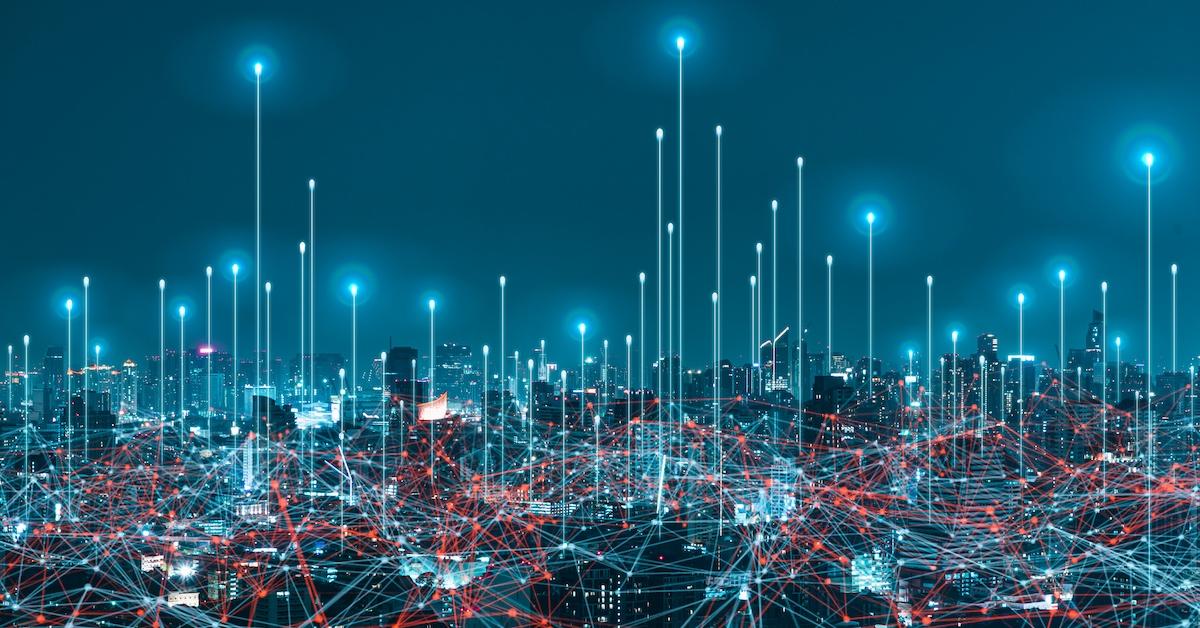For the longest time, the concept of smart automated cities sounded like something from sci-fi movies. However, with the recent improvements to IoT development, the dream is slowly becoming an inevitable reality. Through advanced technology, people can now become a part of sustainable, energy-efficient communities that promote high quality of life.
There are various types of IoT applications and systems that can become building bricks for smart cities. With such technology, you can create beautiful urban zones with flawless garbage policies, parks, street lighting, and transportation. In this article, we explain why smart cities are so important and how IoT can help usher them.
What are smart cities?
Basically, smart cities are urban zones that are heavily reliant on modern technology for various processes. The end goal of this symbiosis is to provide residents with a better, more sustainable city living.
Through planned, technology-driven construction, smart cities tackle various issues common to downtown areas. Specifically, each project is done for a specific number of people while optimizing energy and resource usage. To maximize these efforts, planners rely on actionable data-driven insights that help optimize every process.
Here are a few reasons why smart cities are the future:
Improved efficiency
The main reason why smart cities are the future of living is because they’re much more conservative in terms of energy and water consumption. These urban zones force residents to optimize their resource usage, reduce waste, and, thus, reduce each person’s carbon footprint.
Lower pollution
Given the reduced pollution, having numerous smart cities in a wider urban area would reduce regional pollution. On top of that, authorities can use IoT apps to track air quality, water usage, and other relevant environmental factors. In case of resource inefficiencies, these organizations can take corrective measures to ensure better living conditions.
Facility and equipment longevity
Through real-time insights, authorities can track the state of water pipelines, electricity networks, parks and other public areas, and buildings. For example, they can use advanced technology to find leaks in pipes and schedule maintenance of sensitive systems. The series of preventative measures can tackle dilapidation, ensuring that a zone remains in the mint condition for a longer time.
Better quality of life
Ultimately, all these measures are meant to improve residents’ quality of life. Not only will the people have access to better-functioning infrastructure, but they can also enjoy cleaner air and water, better transportation, and safety. Things that were previously a problem for highly condensed areas shouldn’t be an issue in smart cities.
Examples of IoT technology within smart cities
Without IoT, smart cities couldn’t exist. These systems allow us to track complex processes in real-time while also providing solutions to existing and potential problems. Here’s how the technology affects modern urban living:
Lighting
Urban lighting is one of the systems that benefit the most from the Internet of Things. Within smart cities, each street light is equipped with proximity sensors, so the entire system shuts down during the night when there’s no one around. When a person or a vehicle passes nearby, the lights turn on, illuminating the road.
In other words, consumption is minimized while residents can still enjoy safety as if the street lights are constantly active.
Transportation
Another major area of improvement is private and public transportation. By implementing IoT solutions, smart cities can improve the efficiency and effectiveness of traffic. Besides making transit much easier and cheaper, modern technology would also reduce the carbon impact of nearby vehicles.
IoT apps could make transportation more efficient by reducing time spent in traffic, improving the flow of vehicles, and monitoring time spent in a car. Smart programs can consider weather conditions and road works to provide drivers with the best possible route. As if that wasn’t enough, this technology can be used to switch traffic lights on and off based on the current traffic satiation.
Parking
Staying on the topic of traffic, IoT also helps with car parking. A problem that is becoming more severe in the entire developed world might finally be alleviated by using this technology.
Specifically, street sensors can monitor parking spot occupancy and provide real-time notifications to users. That way, you would know where to go and how far you need to drive to find a free spot. The occupancy data is shared in an app, so you can get valuable information on your screen while driving.
Safety
Some of the more progressive countries, like China, have started introducing face recognition software that would track all people on the streets. Through systems of cameras, the authorities know what the residents are doing at every moment.
Surveillance cameras are vital in areas of increased danger, like sports arenas and government buildings, helping track all ground movement. Not only do these tracking systems work for identifying perpetrators, but they can also warn authorities about registered criminals in the area.
Energy use
IoT apps are perfect for monitoring energy consumption within a residential area. These systems provide real-time insights into water, gas, and electricity use in specific buildings and zones. That way, companies in charge can reroute energy from one sector to another or detect potential frauds.
Air pollution
By using devices for monitoring environmental conditions, public organizations can not only predict the weather but also learn more about temperature and humidity. IoT apps are excellent at measuring toxic substances in the air, and users can gain valuable insights into local pollution.
Waste management
Waste management apps measure the capacity of containers in different zones. They can notify the crews whenever containers are filled so they can pick up the garbage as soon as possible. This not only improves efficiency but helps prioritize tasks and routes.
As you can see, IoT can address just about any issue in a modern, smart city. The technology is fantastic for monitoring and optimizing different processes while also minimizing human error.

